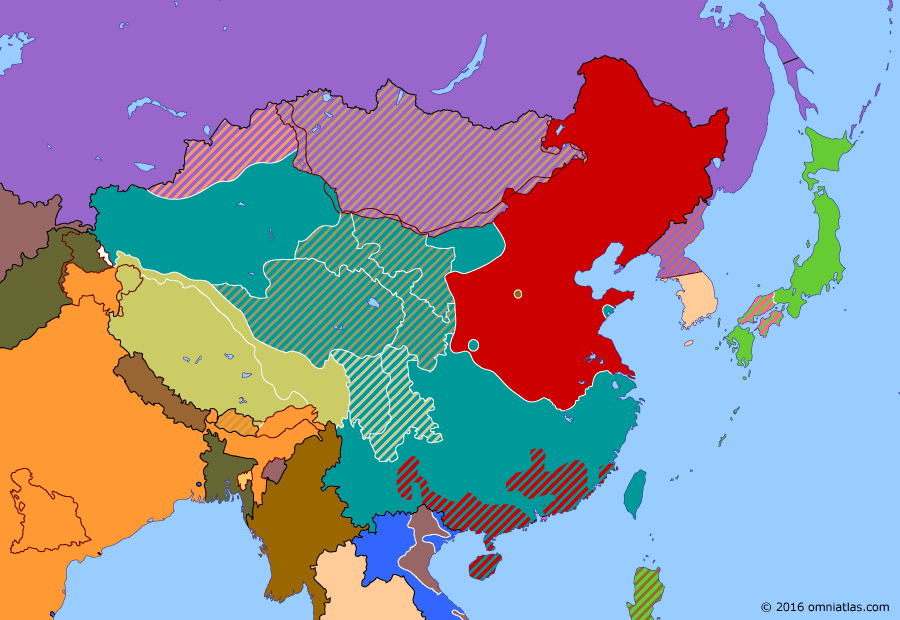East Asia 1949: Communist Victory in North China
Communist Victory in North China
6 Nov 1948 Huaihai Campaign
31 Jan 1949 Communist Victory in North China
1 Jun 1949 Crossing the Yangtze
1 Oct 1949 People's Republic of China
8 Dec 1949 Nationalist Taiwan
With their defeat at Xuzhou, the Nationalists were forced to abandon northern China and fall back on Nanjing and the Yangtze River. Chiang Kaishek resigned and his replacement, Li Zongren, attempted to negotiate peace with Mao.
